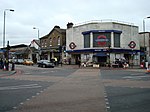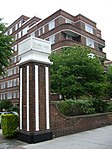Metropolitan Community Church London
Metropolitan Community Church London (MCC London) was the first Metropolitan Community Church congregation in Europe and the first one chartered out of the United States. The congregation was founded in 1972 as the Fellowship of Christ Liberator and at least a year later a majority indicated that they wished to affiliate with the MCC. The then minister, the Revd Tony Cross, resigned and Peter Embrey did not wish to continue to host the congregation. The name was changed and they went on to occupy a location on Sistova Road, in the Balham neighbourhood of South London. MCC London no longer exists as a congregation, but was the source (directly or indirectly) of three other congregations: MCC North London, MCC East London, and MCC South London. MCC churches have a "primary ministry in gay, lesbian, bisexual, transgender and queer communities, providing a safe-space environment of an accepting congregation where people can find God's salvation, personal support, spiritual growth and guidance toward health and wholeness." The churches have been active in efforts to support marriage for LGBTQ people and specifically reach out to LGBTQ families. They have also supported efforts to educate and combat violence against LGBTQ people.
Excerpt from the Wikipedia article Metropolitan Community Church London (License: CC BY-SA 3.0, Authors).Metropolitan Community Church London
Sistova Road, London Balham (London Borough of Wandsworth)
Geographical coordinates (GPS) Address Nearby Places Show on map
Geographical coordinates (GPS)
| Latitude | Longitude |
|---|---|
| N 51.443844 ° | E -0.147243 ° |
Address
Sistova Road 47
SW12 9QT London, Balham (London Borough of Wandsworth)
England, United Kingdom
Open on Google Maps





